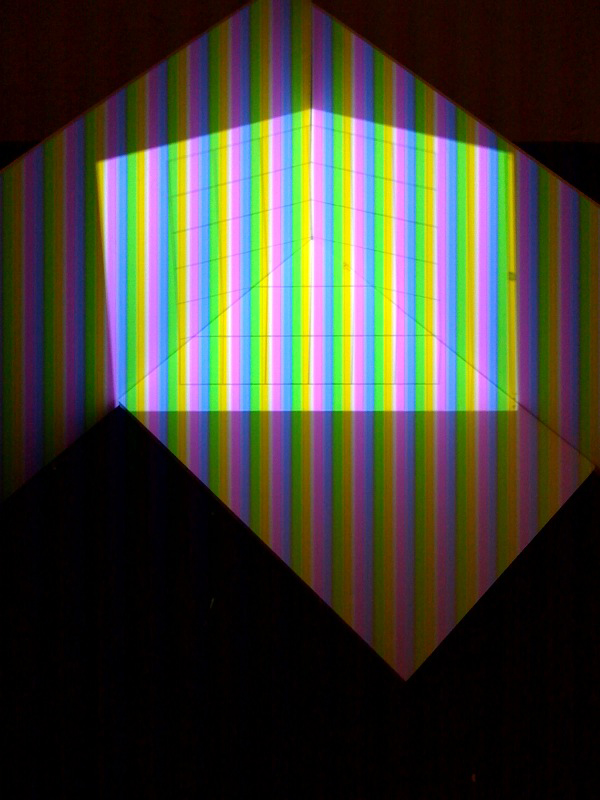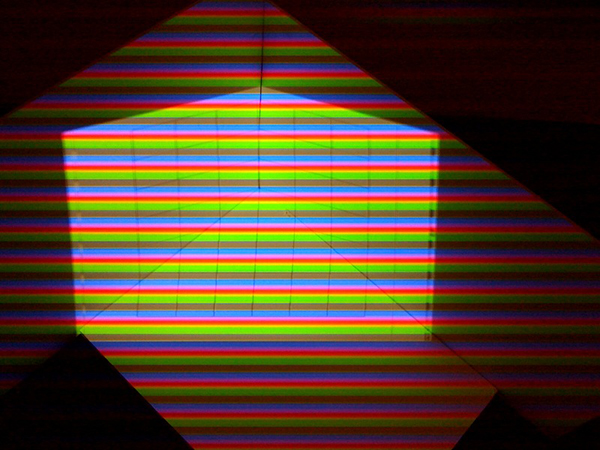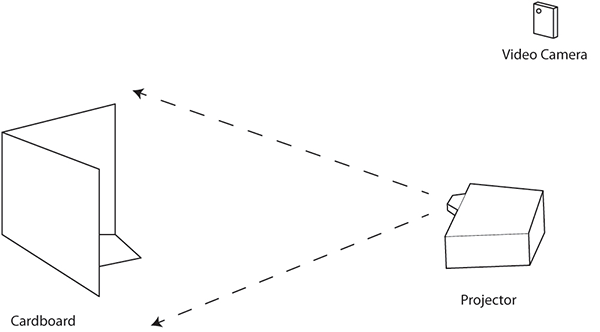


An installation consisting of a physical object (cardboard), a projected image (of a grid), and a video camera. The viewer is asked to view the installation through the video camera. The piece explicitly acknowledges and makes it an issue for itself how the viewer's perception is constructed by asking the viewer to see and acknowledge the effects every element has on the final view/image. At first, the viewer only sees a cardboard with light being projected on and a video camera pointed towards the cardboard. The "aha moment" occurs when the viewer looks through the video camera which turns a mundane scene into an aesthetic experience. One sees the cardboard, the projected image of the grid, and the rolling rainbow banding effect moving horizontally or vertically introduced by the video camera (created when the frame rate and the refresh rate of the projector are out of synch) combined to create an abstract picture. Upon seeing the abstract picture through the video camera, the viewer at last recognizes it as an aesthetic experience. It was made by a desire to create a piece that one had to see in person. Today most images produced are completely immaterial, captured on cell-phones and shared on social networking sites very rarely existing as an object. Photography has dislodged itself from its material substance and is about information and the transmission of information than anything else. If one can instantaneously download and view images that are art or of art, shouldn't we be asking ourselves "Why do we go see art, especially the photographic kind, anyway?"